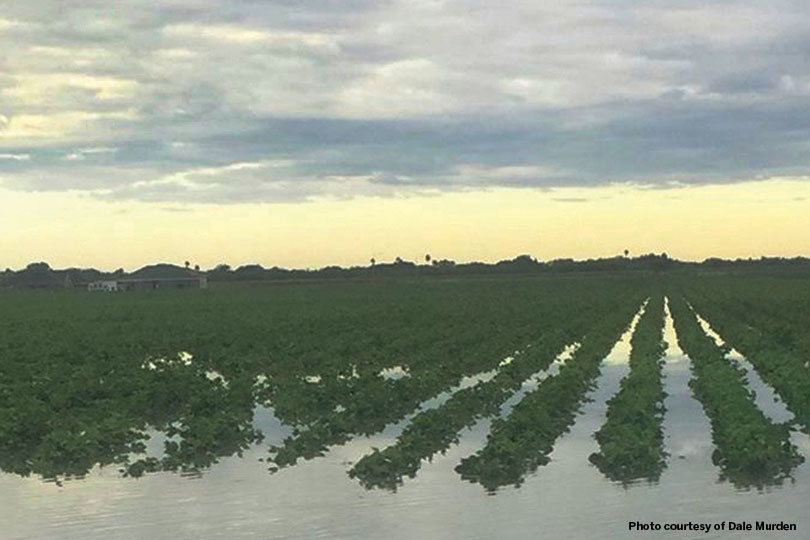By Macie Clugston
TFB Communications Intern
The Rio Grande Valley received more than 11 inches of rain in five hours on Monday, June 24.
Hidalgo, Cameron and Willacy counties were facing drought conditions prior to the rain, and farmers were irrigating their crops.
“You have the dry land sections of the Rio Grande Valley that are non-irrigated,” Dale Murden, president of Texas Citrus Mutual, said. “You have the irrigated sections that can do just that, irrigate. Dryland sections were getting into a situation where they really need it to rain on their crop.”
Farmers and ranchers were expecting rains to move up north from Mexico on Monday, Murden said. They did not anticipate storms from Houston to move toward their area. But the two storm systems met in the Rio Grande Valley and did not stop for several hours.
“It was unexpected,” Murden said. “I don’t know of a single forecaster that predicted it.”
Murden noted that depending on what farmers and ranchers were growing, the weather affected them differently. But standing water is the main problem facing growers.
“Obviously, any rain is a good rain,” Murden said. “The standing water is the issue. We need to get some of these areas drained off a little quicker than we have the ability to do so with the infrastructure system down here in the Valley.”
The drainage system is designed to move the water to lower areas when pumped off fields. In lower areas, like Santa Rosa, water levels were rising.
The Rio Grande Valley saw similar weather patterns in June 2018. A severe-level drought had turned rangelands yellow-brown and scorched non-irrigated crops. Within five days, the same areas were flooded in over three feet of water, according to the National Oceanic and Atmospheric Administration.
Murden said this season will be challenging if the cycle continues.
“We’ve had as much as 120-degree heat indexes this year so far,” Murden said. “It’s been miserably hot, but if we fall back into the pattern we had last year, then it’s going to be a tough, tough season.”

